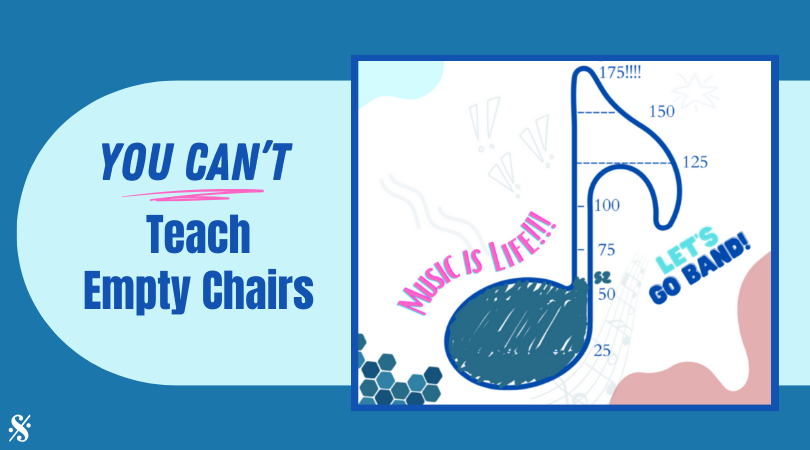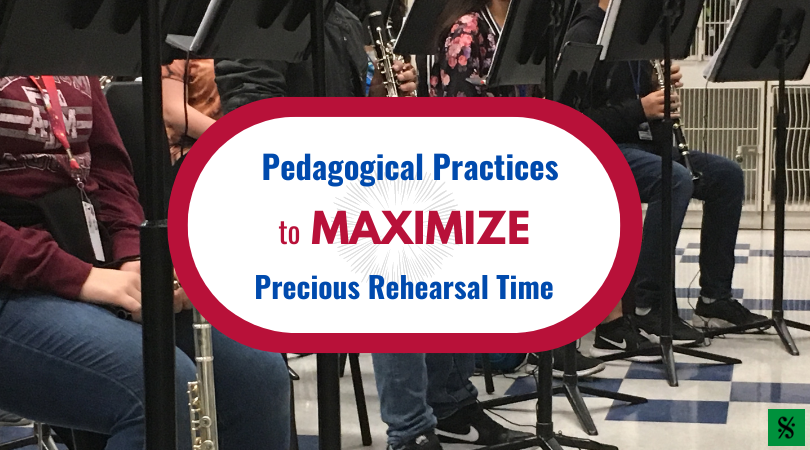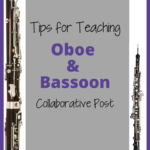In our summer survey, we asked Band Directors Talk Shop readers “What are the best tips you know for teaching oboe and bassoon?” With over 300 responses to the survey, we put together these ideas to help you improve your double reed instruction. Thanks so much to all of our readers who took time to fill out the survey. We’ll be posting more Readers’ Collaborative Articles in the future!

The Instrument Chooses the Player
- Finding the right personality is key!
- Pick really smart, motivated kids.
- I feel like a used car salesperson…but, here goes. It can be a challenge to entice middle school kids to want to play oboe or bassoon, especially if you (the band director) don’t specialize in one or the other. My method is simple. I will play a few simple tunes on the oboe while in my office with the door ajar. More often than not a student will ask “What is that?” I will give a little history of the instrument ending with…”It takes a smart kid who will work hard to master this beast. It’s not for just any student.” It works every time. I’ve always had an oboe or two in every class.
- More specifics here.
Embouchure & Tone
- Think of an O-shaped embouchure (O for oboe!) and roll the lips in from there.
- Learn what “crowing” (on a reed) is and have students do it. (check out this article.)
- Be sure lips covering the teeth. Teeth do not touch the reed.
- Really focus on pulling that lower jaw down and back…it’s all lips, no teeth. Most students pinch up with lower jaw.
- When creating an embouchure practice whistling inward (we take the idea of pulling your corners in like a drawstring very, very literally).
- They need to listen to good playing on those instruments so their tone will eventually mimic what they hear. It’s not easy for beginners to pick up on how they should sound when they are usually the only one in the band.
- For bassoon, especially, the embouchure is actually very loose! This can be a struggle for clarinet and saxophone players who are learning bassoon.
Hand position & Instrument position
- Focus on wrist positions rather than simply finger positions. If they wrists are relaxed, comfortable, and correct, the fingers will be as well.
- Hold oboe out at a 45 – 70 degree angle. (Not pointing downward)
- For bassoon, use the pad of the finger to seal the tone hole.
Reeds
- Buy reeds from a specialized double reed source.
- Find a good source of hand-made reeds and, if possible, someone willing to adjust them.
- Make sure students soak reeds in water rather than their mouth. (Use a water cup attached to the stand.)
- Basic skills with a set of pliers to adjust wires can be shockingly effective.
- Students should order three at a time and re-order early.
- Don’t let students be lazy…they must soak the reed every time.
- Use a harder reed than you might think.
- Be sure students soak their reeds long enough each day – don’t rush them.
- So, SO many people commented about reeds. It was the most mentioned area in the survey by far.
Tuning
- Work with a drone.
- Aural skills are vital for these instruments. Ensure they can sing their part before playing.
Fingerings & Technique
- Learn the alternate fingerings.
- Have a GOOD fingering chart.
- Find a real bassoonist to help teach students alternate fingerings.
- Teach your bassoonists to “flick” in the tenor range – cracking notes are frustrating and sound bad, students want to sound good so give them the skills to do so
- Seat the bassoonist directly next to you for the first 4 to 5 months of their playing experience. They need this closeness in order for you to ensure they are using their whisper key as they should, and also forming their embouchure and hand placement correctly. These vital elements are SO often learned incorrectly, and have to be relearned later in life, when it can all be solved by having the director literally right next to the bassoonist from the beginning where it is easy to see the potential mistakes they are making.
Other
- Play along with the kids!
- Send them to a professional if possible/Find a double reed specialist in your area.
- Find a double reed friend!
- Have older kids tutor younger kids, even just to play duets once a month.
- My tip would be as they Jedi say, Patience.
- Have an oboe or bassoon player give master classes and invite all the double reed students from neighboring schools.
- Don’t expect the students to play the instruments if you can’t play them yourself. Take one home and get familiar with it!
- The second most mentioned topic (after reeds) was to find a professional/mentor who is an expert to teach you and the students more!
Related Reading:
Getting the Most from Double Reeds in the Concert Band
ONE Thing that Improved Student Performance in Your Band (well, really 64)
A Non-bassoonist’s Guide to Equipment
If you would like to receive our weekly newsletter, sign up here.
Don’t forget to like us on Facebook too!
Learn. Share. Inspire.
BandDirectorsTalkShop.com







Leave a Reply
You must be logged in to post a comment.